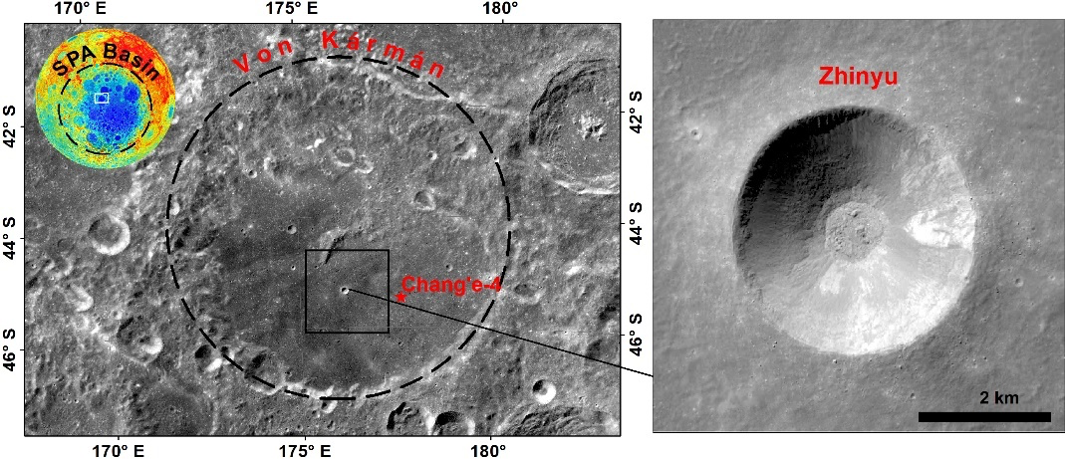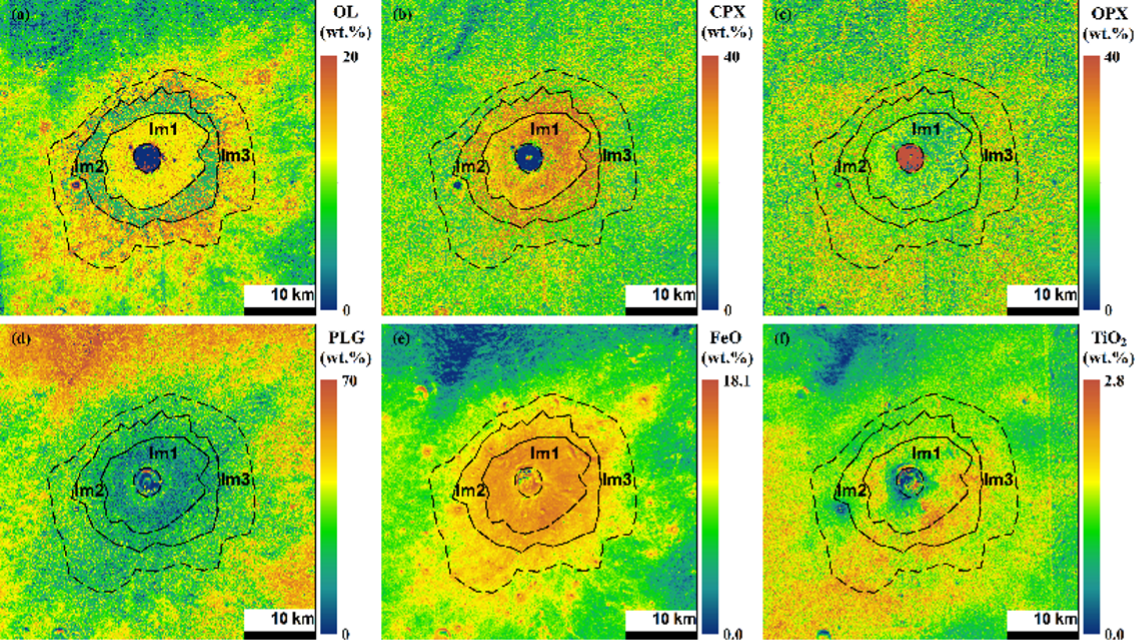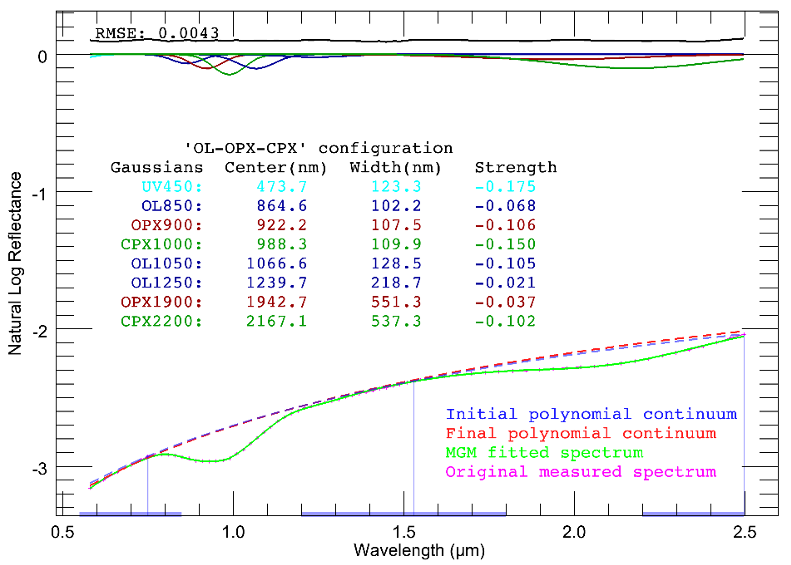
There had been at least three mare flooding events occurred inside the Von Kármán crater during the Imbrian period, according to a study by the Aerospace Information Research Institute (AIR) of the Chinese Academy of Sciences (CAS).
The study was published in Icarus. It was conducted by the planetary mapping and remote sensing team led by Prof. DI Kaichang from the State Key Laboratory of Remote Sensing Science of AIR.
As of February 19, 2021, the "Yutu-2" rover had safely worked 27 lunar days (778 Earth days) and travelled a cumulative mileage of 652.62 meters inside the Von Kármán crater. The Von Kármán crater, lying in the northwest of the giant South Pole-Aitken (SPA) basin on the lunar farside, was formed 3.97 Ga ago in the pre-Nectarian period.
During the Imbrian period, the crater floor area was flooded by mare basalts. The Zhinyu crater, lying in the west of the Chang'e-4 landing site, is a rather fresh crater that sits on the mare basalts. The formation of Zhinyu crater can excavate the underground basalts and deposit the ejecta around the crater. Therefore, the Zhinyu crater and the surrounding ejecta provide an important window for exploring the composition and characteristics of the mare basalts.

Fig. 1. Geological context of the Zhinyu crater and Von Kármán crater (Image by AIR)
The team used the mineral abundance, including clinopyroxene (CPX), orthopyroxene (OPX), olivine (OL) and plagioclase (PLG), to evaluate the composition of the continuous ejecta around Zhinyu crater.
They found that three rings with varied mineral abundance, in particular for the olivine, are distributed concentrically around the Zhinyu crater. The mineralogical variations suggest there might have been at least three distinct mare flooding events with a degree of compositional differences occurred inside the Von Kármán crater and formed three basaltic layers: Im1, Im2 and Im3.

Fig. 2. Mineral abundance of the Zhinyu crater ejecta. (a) olivine; (b) clinopyroxene; (c) orthopyroxene; (d) plagioclase; (e) FeO; (f) TiO2 (Image by AIR)
Spectral deconvolutions clearly showed a decrease in the absorption bands (decreased depths) as a function of the depth of the proposed basaltic layer between lm1, lm2 and lm3 for all mafic elements (OPX, CPX, OL), which makes sense with the overall FeO content and the expected stratigraphic variation at depth. The inferred Mg numbers (Fo#) of the three basaltic layers are close to 55, indicating that the magma inside the Von Kármán crater had undergone a moderate evolution.

Fig. 3. Spectral deconvolution of the average spectrum of the basaltic layer Im1 (Image by AIR)
The ejecta of Zhinyu crater was deposited around the crater following an inverted pre-impact stratigraphy of the underlying mare basalts: the materials from the shallower depths tend to be thrown farther away from the crater rim than materials excavated from deeper layers.
As it cannot be determined whether the Zhinyu impact had penetrated through the entire basaltic layer Im1, the team estimated the overall thickness of three basaltic layers is at least 320 m. And they proposed a refined stratigraphic sequence for the low-Ti mare basalts from top to bottom: Im3 (~107 m), Im2 (~84 m), and Im1 (=129 m).
The Yutu-2 rover is traversing westward and is planned to reach the mare basalts area in the future. The proposed stratigraphic sequence and basalt thickness are expected to be validated by the onboard Lunar Penetrating Radar.

86-10-68597521 (day)
86-10-68597289 (night)

52 Sanlihe Rd., Xicheng District,
Beijing, China (100864)

